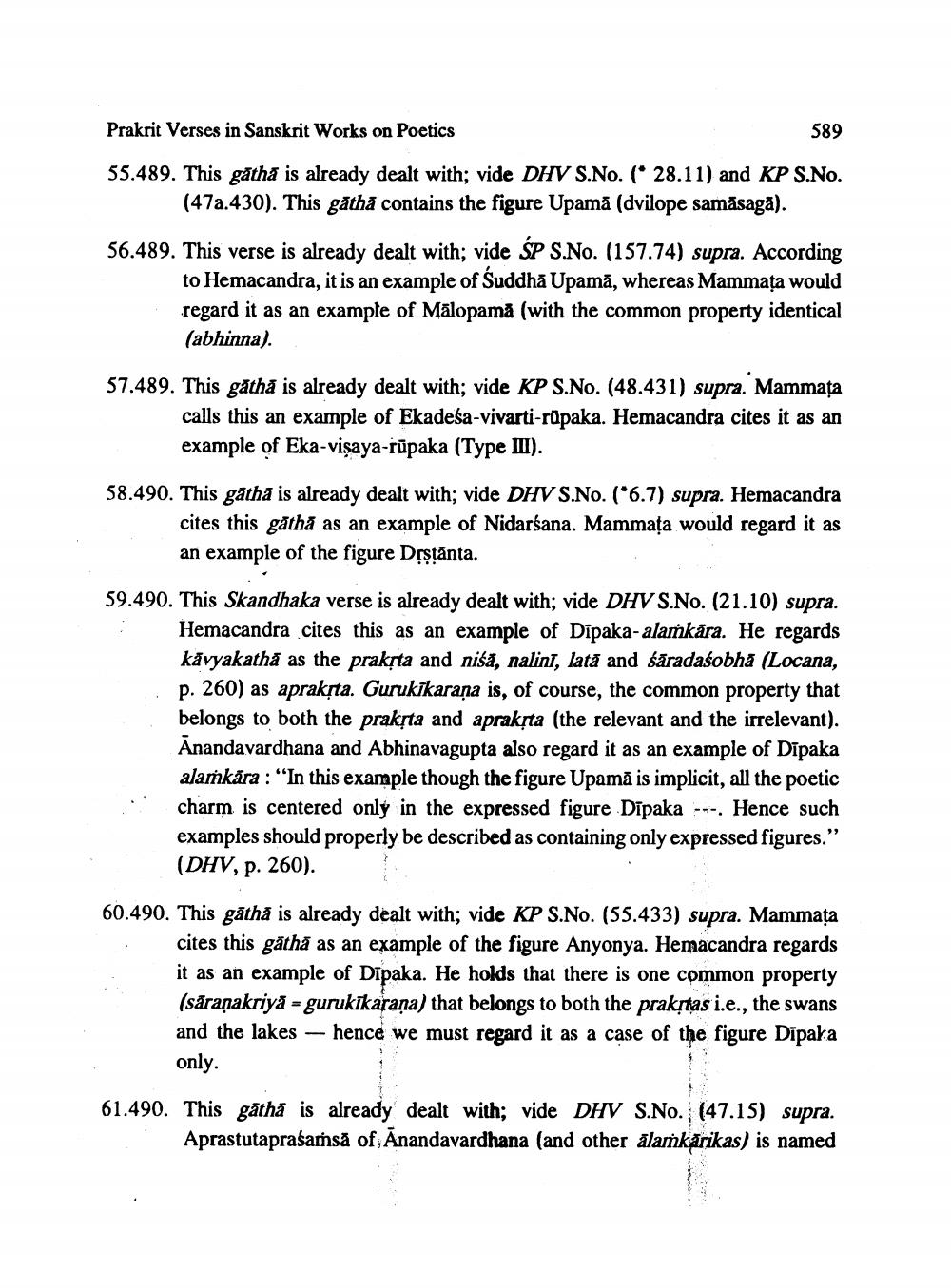________________
Prakrit Verses in Sanskrit Works on Poetics
589
55.489. This gātha is already dealt with; vide DHV S.No. (* 28.11) and KP S.No.
(472.430). This gathā contains the figure Upamā (dvilope samāsagā).
56.489. This verse is already dealt with; vide SP S.No. (157.74) supra. According
to Hemacandra, it is an example of Suddha Upamā, whereas Mammata would regard it as an example of Malopamā (with the common property identical (abhinna).
57.489. This gātha is already dealt with; vide KP S.No. (48.431) supra. Mammața
calls this an example of Ekadeśa-vivarti-rupaka. Hemacandra cites it as an example of Eka-visaya-rūpaka (Type III).
58.490. This gātha is already dealt with; vide DHV S.No. (*6.7) supra. Hemacandra
cites this găthă as an example of Nidarśana. Mammața would regard it as an example of the figure Dșstānta.
59.490. This Skandhaka verse is already dealt with; vide DHV S.No. (21.10) supra.
Hemacandra cites this as an example of Dipaka-alamkåra. He regards kávyakatha as the prakta and niša, nalini, lată and śāradaśobha (Locana, p. 260) as apraksta. Gurukikaraṇa is, of course, the common property that belongs to both the praksta and aprakita (the relevant and the irrelevant). Anandavardhana and Abhinavagupta also regard it as an example of Dīpaka alamkara : "In this example though the figure Upamā is implicit, all the poetic charm is centered only in the expressed figure Dipaka ---. Hence such examples should properly be described as containing only expressed figures." (DHV, p. 260).
60.490. This gătha is already dealt with; vide KP S.No. (55.433) supra. Mammața . cites this gātha as an example of the figure Anyonya. Hemacandra regards
it as an example of Dipaka. He holds that there is one common property (sāranakriya = gurukikarana) that belongs to both the praktas i.e., the swans and the lakes - hence we must regard it as a case of the figure Dipaka only.
61.490. This gātha is already dealt with; vide DHV S.No. (47.15) supra.
Aprastutaprašamsă of Anandavardhana (and other alamkarikas) is named




